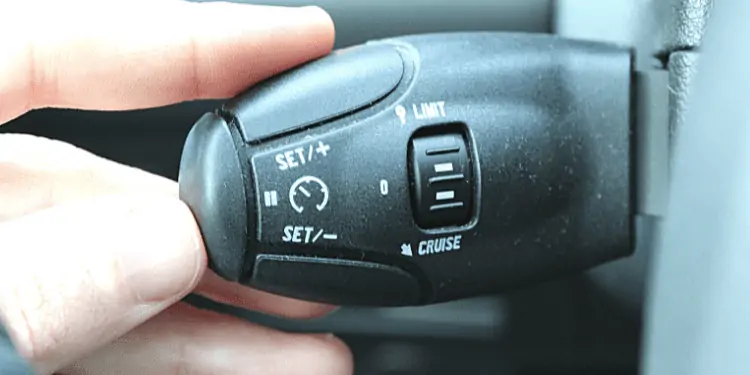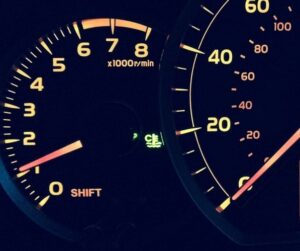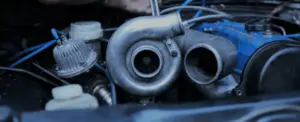I recently drove a new car that has a feature named “Advanced Cruise Control.” It took me some time to trust it; I have to say! While on a long drive, I turned it on, and my car ran at a constant speed; I didn’t even have to put my foot on the accelerator to maintain that speed. That’s no different from standard cruise control, I know.
My concern was what would happen if something suddenly got in my way. Or a car ahead is driving more slowly than me?
Will the adaptive cruise control feature activate the brakes?
In this article, we’ll look in detail at whether cruise control does use the brakes, things to be aware of, and when it may not be a good idea not to trust cruise control completely.
In brief though
Generally, modern cars with automatic transmissions and electronic systems use cruise control systems to brake. Older cars with manual transmissions don’t use brakes. In old manual cars, cruise control fixes the throttle position, so the car keeps running at the preset speed.

In older manual cars, we need to apply brakes and shift gears to change the speed. Whereas modern vehicles, with electronic sensors and actuators, come with an advanced or adaptive cruise control system, which has all the features, one can expect, including braking.
What is the Difference Between Adaptive Cruise Control and Standard Cruise Control?
Cruise control systems were initially designed to maintain one constant speed without constantly pressing the accelerator pedal, known as Standard Cruise Control. This system was used in older manual cars, where an actuator kept the engine’s throttle at a fixed position so that the car moved at a preset speed.
The modern form of the standard cruise control system is called Adaptive Cruise Control (ACC) or dynamic cruise control. It contains a lot more features than the conventional control system. It employs electronic sensors, radars, and cameras to adjust the vehicle’s speed.

It can maintain the speed, lower or raise the speed, and maintain a safe distance from the next vehicle. When something suddenly comes in front of you in emergency scenarios, it can stop the car.
In short, the ACC is like an autopilot for your car.
When Should You Not Use Cruise Control?
Cruise control is the feature that helps you maintain a constant speed without pressing the accelerator constantly. It helps the drivers relax and removes the need to have a foot on the accelerator. This feature has been introduced, so that one can drive comfortably when traveling long distances.
Cruise control should not be used when you are driving inside a city with traffic or when you are driving at low speeds. Cruise control is only meant for long drives, with little or no likelihood of having to change speed regularly.
Pay particular attention to ice and snow before engaging cruise control. Some carmakers will refuse to engage it if it detects poor road conditions. If in doubt, keep it turned off.
How Does Cruise Control Work on a Manual Car?
In the case of manual cars, since you have to adjust the gears as the car gains speed manually, you have to wait until you get into the highest gear before using it.
In manual cars, cruise control uses a cable connection with an accelerator. This keeps the throttle at the fixed position to maintain that constant speed you have set. But the problem here is that the cruise control deactivates once you shift gears or press the clutch.
As mentioned earlier, this is also known as the standard cruise control system. Due to its limited functionality on these vehicles, very few manual cars are equipped with adaptive cruise control.
How Does Cruise Control Work on an Automatic Car?
All cars, including automatics, have an engine control unit (ECU) programmed for external conditions. For instance, on all-wheel-drive cars, it monitors the grip on each wheel and gives a different amount of drive to the wheels that need it.
Cruise control is the same concept. It is a subprogram of ECU. These cars have automatic gear-changing mechanisms, a lot of sensors, radars, actuators, and cameras, which take the input and perform accordingly based on the conditions.
Automatic cars are usually equipped with adaptive cruise control. This system can calculate the speed of the car running next to you and adjust your car’s speed to maintain a safe distance. Similarly, it can also use the brakes if something suddenly comes your way.
Some systems are also programmed to run on slippery, wet roads, steep slopes, etc. On most systems, the cruise control doesn’t switch off as the automatic transmission goes up and down the gears. This is easier for the driver on long journeys.

Does Cruise Control Use More Gas?
So does cruise control use more gas? No, in normal scenarios, when you use cruise control, your vehicle attains a constant speed and keeps following that. Then, since your engine is not slowing down or accelerating often, the engine’s fuel economy is improved compared to when you drive the car normally.
The research conducted by Volvo and National Renewable Fuel Laboratory in 2019 concludes that using an adaptive control system can improve fuel economy by 5 to 7 %.
However, when using the adaptive cruise control in conditions where the car often speeds up or slows down, it may consume more fuel than normal. So, cruise control is fuel-efficient when driving long distances at a constant speed.
Does Hill Descent Control Use Cruise Control Systems?
When moving down a hill, you need to apply the brakes constantly. The standard cruise control system isn’t equipped with such a feature. But, modern vehicles with adaptive or dynamic cruise control systems can change based on external conditions. So, such vehicles do have a hill descent cruise control system. But still, one should be very careful while using cruise control when coming down a hill.
Conclusion
Standard cruise control does not make use of brakes. Every time you hit the brake pedal or the clutch – on manual cars – the system disengages, giving the driver complete control. It is possible to slow the car while in cruise control by reducing the set speed on the control stick. This will only work if you have plenty of time to anticipate the slowing speed of vehicles ahead. It can never be relied upon to stop the car quickly.
Advanced or adaptive cruise control uses brakes, but it can take time to trust it. It can cause more stress than it relieves, especially when you drive a car with adaptive cruise control for the first time.
Every car manufacturer that fits cruise control will have a thorough section on how to use it and when not to in the car manual. Experienced drivers often get in a car and drive; I know I do, but cruise control is always something I make sure I’m totally happy with before using.













